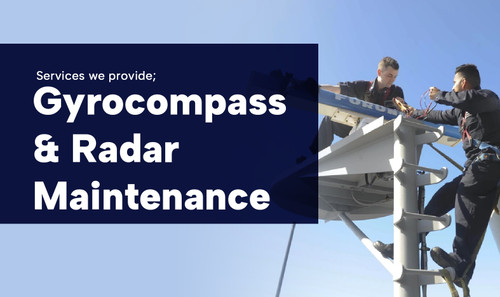Guide to Gyrocompass and Radar Maintenance: Best Practices and Troubleshooting Tips
Maintaining and ensuring the proper functioning of gyrocompasses and radars is crucial for the safe navigation and efficient operation of marine vessels. These critical navigational instruments play a vital role in providing accurate heading information and detecting obstacles, allowing ships to navigate safely in all conditions. In this blog post, we will explore the best practices for gyrocompass and radar maintenance, including routine checks, troubleshooting techniques, and important considerations to keep these essential systems in optimal working condition.
1. Understanding Gyrocompass Maintenance:
- Regular Inspection: Conduct visual inspections to check for any signs of physical damage or corrosion.
- Calibration and Alignment: Ensure the gyrocompass is calibrated and aligned properly according to manufacturer specifications.
- Lubrication: Lubricate moving parts as recommended to prevent friction-related issues.
- Power Supply: Verify the power supply integrity and connections to avoid interruptions or malfunctions.
- Error Monitoring: Regularly monitor error indicators or alarms, and investigate and rectify any reported errors promptly.
- Documentation: Maintain accurate records of maintenance activities, repairs, and calibration results.
2. Radar Maintenance Best Practices:
- Cleanliness: Keep the radar antenna and associated components clean and free from dust, dirt, or debris.
- Antenna Alignment: Verify that the radar antenna is aligned correctly for optimal performance.
- Cable Checks: Regularly inspect and test the radar cables for any signs of wear, damage, or loose connections.
- System Integrity: Monitor the system's overall health by checking for abnormal sounds, vibrations, or error messages.
- Software Updates: Stay up-to-date with the latest radar software updates provided by the manufacturer.
- Performance Verification: Conduct periodic performance tests to ensure accurate target detection and measurement.
3. Troubleshooting Common Issues:
a. Gyrocompass:
i. Spinning Errors: Check for air bubbles, low oil levels, or other mechanical issues that may cause spinning errors.
ii. Drift Errors: Investigate and adjust compensations for any heading drift errors.
iii. Power Interruptions: Inspect power supply connections and perform necessary repairs or replacements.
b. Radar:
i. Poor Signal Quality: Verify antenna alignment, clean the antenna, and check for obstructions.
ii. Display Issues: Troubleshoot display problems by checking cables, connections, and adjusting brightness/contrast settings.
iii. False Echoes: Investigate potential causes such as rain, sea clutter, or electromagnetic interference.
Conclusion:
Regular maintenance and diligent troubleshooting are essential for ensuring the reliable performance of gyrocompasses and radars. By following the best practices outlined in this blog post, vessel operators and technicians can keep these critical navigational instruments in optimal condition, enhancing safety, efficiency, and accuracy in marine navigation. Remember to consult the manufacturer's guidelines and seek professional assistance when necessary to maintain and troubleshoot gyrocompasses and radars effectively.

